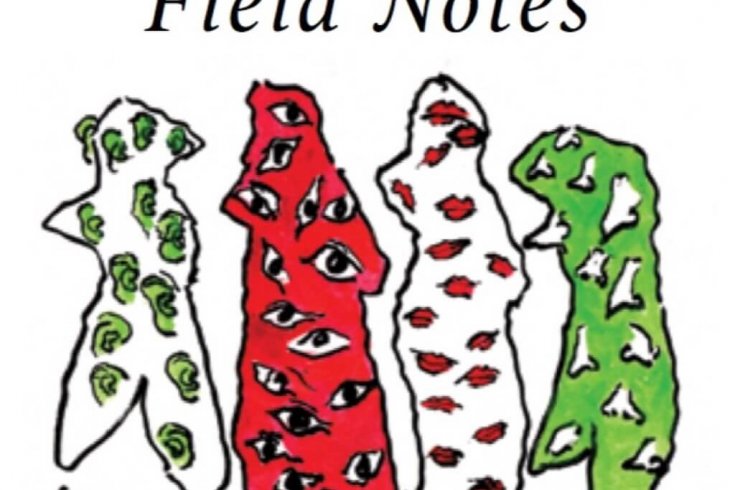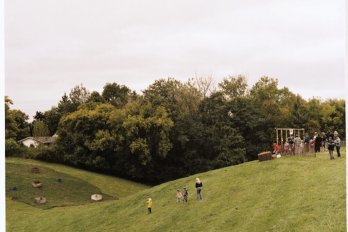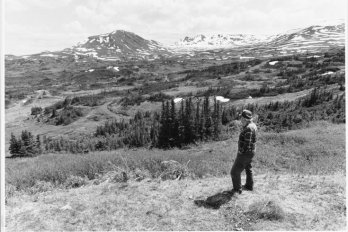lhasa —Tashi leaned over to me and whispered, “Don’t say anything, please. There are hidden microphones here.” We were entering the Potala Palace, the traditional seat of the Dalai Lama, a huge and ancient building high on a hill in eastern Tibet. There are a thousand rooms in the old palace, but only thirty-five were open to us. Monks sat on cushions in the hallways, scrutinizing us carefully—too carefully, making me think they were not monks at all.
This was not what I had expected. I had come to see what I could of traditional Tibet before a railway line from Beijing opens in July 2006, bringing a flood of Chinese migrants and workers into a heartland opening to mining operations and heavy construction. I was starting to think I had arrived too late.
Eight other travellers and I had hired a chugging but determined little bus to take us from Kathmandu over the high Himalayan passes. The rainy season was shimmering to a close and the road was washed away in four different places before we reached the Chinese-held border. There, we met Tashi (not his real name). Each group of travellers must be accompanied by a government-approved guide, and we had feared from the beginning that we would be saddled with a Communist Party official. For the first few days, we weren’t sure we hadn’t been. Tashi had the face of a Tibetan but he kept to himself. He got us through the Chinese military’s checkpoints and occasionally pointed out some of the ruined Buddhist monasteries high on the craggy hills. For the most part, though, he was silent and distant.
Then, on the third day, during a hike near the massive northern flank of Mount Everest, I discovered that Tashi had been afraid of us. “Listen,” he told me as we paused alongside a gurgling stream, “you are Canadian?”
“Yes,” I said.
“Then I will tell you something. A friend of mine is now in jail . . . for three years.”
“Why?” I asked.
“Same as me,” Tashi said. “He was guiding a group across to Lhasa. All of them were Canadian.” He looked at me hard. “He began to tell them about the problems here. He told them everything and then . . . ”
“What?”
“In the end, when they came to Lhasa, one of the Canadians . . . ” he paused. “One of the Canadians was not Canadian. False passport. He was a spy. And so they put my friend in jail. Now, there are only a few Tibetan guides left. I am afraid for my job. Now they bring 300 Chinese guides down. I think I will not have a job soon.”
When we got back on the bus, Tashi stood and asked for everyone’s attention. “In the bus,” he announced, “you can ask me anything. I will tell you the truth. When we are stopped, though, and when we are in the monasteries, please, you are not to speak of politics. Please.”
For ten full days we drove across the dusty Tibetan plateau, passing only a few small villages. Atop each mountain pass, strings of prayer flags fluttered in the breeze. We saw more ruins on the hillsides. Monasteries, Tashi told us, destroyed during the Cultural Revolution.
At last, our little bus puttered down a cliff-hugging road and into the magical city of Lhasa. But when we approached the fabled Potala Palace, our faces pressed to the windows in anticipation, the grand palace was almost completely obscured by block after block of squat, grey buildings. Tashi, who was born in Lhasa, pointed out the changes. There were department stores and a telecommunications tower on the hill where an ancient medical school used to sit. Red banners were strung across the streets and the military presence was plain to see. You would have thought you were arriving in a thoroughly Chinese city. And sadly, we were.
The Chinese call Tibet Xizang, the Western Treasure House. The region is rich in minerals: gold, copper, diamonds. More worryingly, rumours of vast quantities of high-grade uranium abound. In the rush for resources, much of the old world is being trampled, and, with the railway line nearing completion, Tibet will be forever changed.
After parading us through the barren Potala, Tashi brought us to our last stop, an area in the eastern part of Lhasa called the Barkhor. Across the square from our lodgings was the Jokhang Temple. The Jokhang dates back to the seventh century and is considered to be the holiest place in all of Tibet. For some time, we rested our weary bones on the doorstep of our inn and watched the pilgrims circle the shrine. Most were elderly; some wore rags and animal skins. They limped and hobbled around the ancient building three times, then solemnly entered through its ancient doors.
I stood up. The pilgrims were spinning prayer wheels as they walked, and one of them waved at me to join them. I did. An old woman touched my sleeve as I came up, and they all smiled—great, crack-toothed grins. I found myself shuffling along with them across the cobblestones, whispering prayers for a broken universe. This was the Tibet I had imagined, a place quickly disappearing into history.
One old man was prostrating himself at every step. He buckled down onto his knees, then slid out face first onto the ground only to rise up, take a single step, and repeat the agonizing process again. All around me, the soft murmuring of pilgrims’ chants swelled and echoed off the old walls. Inside, in the candle-dark corridors, long rows of creaking prayer wheels turned. As long as they spun, a spark of Tibet would remain.





